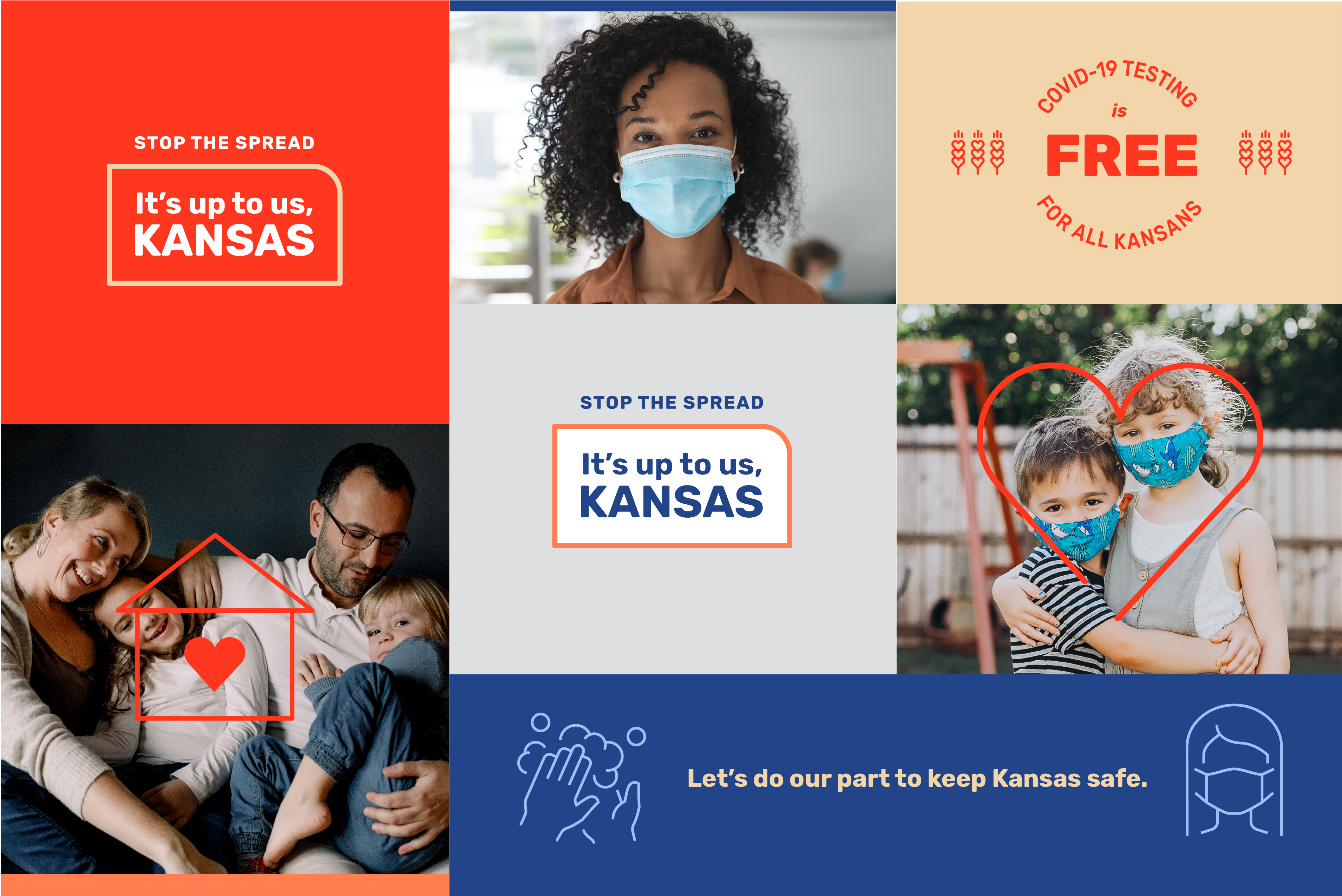Governor Laura Kelly Launches COVID-19 Public Health Campaign “Stop the Spread. It’s Up to Us, Kansas”
~Creative campaign aims to help stop the spread and increase free testing statewide~
TOPEKA – Governor Laura Kelly and the State of Kansas today launched the “Stop the Spread. It’s Up to Us, Kansas” campaign to share the importance of getting tested, wearing masks and to encourage social distancing this holiday season to stop the further spread of COVID-19.
The campaign includes the launch of a new testing website, GoGetTested.com/Kansas, to quickly identify free testing locations throughout the state. It will run on television, radio, social media, print, outdoor and digital advertising starting today and throughout the month of December. GoGetTested.com/Kansas lists seven testing site locations, more locations will be added on a rolling basis to meet the needs of communities across the state.
“We are at a critical point of time in our fight against COVID-19 and our response requires the most urgent and creative solutions,” Governor Laura Kelly said. “This campaign aims to reach every corner of our state with critical public health messages infused with some humor and holiday spirit to bring a smile and rally our strength.”
The campaign includes information on the COVID-19 unified testing strategy that aims to rapidly increase the state’s ability to provide COVID-19 diagnostic and screening tests to Kansans free of charge. The overall goal is to double the amount of testing in Kansas by the end of 2020. To date, approximately 812,000 COVID-19 tests have been conducted in the state.
“When testing supplies were limited, we only recommended that those with symptoms or risk of exposure get tested,” Governor Laura Kelly said. “Now that testing is more widely available, we are urging everyone to get tested so we can better control the spread of the virus throughout our communities, which ultimately will help us keep businesses, schools and the economy open.”
The campaign is part of a broader, all-of-the-above strategy to encourage Kansans to follow the best practices, encourage voluntary testing, avoid mass gatherings, and use face-coverings. The approach includes partnerships with the Kansas Hospital Association, Kansas Chamber of Commerce, Kansas Farm Bureau, the Kansas Leadership Center, and other stakeholders.
Additional information on testing is included below. For more information on testing sites in Kansas, please visit GoGetTested.com/Kansas.
Additional Testing Information
In addition to testing, there are several things which need to be implemented to successfully reduce the spread of COVID-19 in Kansas. This includes isolating positive individuals, investigating positive cases, quarantining those exposed, and implementing prevention protocols.
- ISOLATING. When an individual tests positive for COVID-19, they are instructed to isolate from others for up to 10 days, depending upon their symptoms. Because the person may be infectious during this time, it is essential for them to follow this. This is also essential for those who are asymptomatic to follow as well, as they still may be infectious despite not having symptoms. Further guidance and instructions can be found on KDHE’s COVID-19 website.
- QUARANTINE. Everyone who has been exposed to someone who tests positive is at risk of getting the virus. Public health seeks to locate those who have been close contacts of the infected person, and to advise those individuals to stay at home and away from others for two weeks. Since symptoms may take between 2-14 days after exposure to develop, it is essential for exposed individuals to stay at home away from others. This is referred to as quarantine.
- CASE INVESTIGATION: After a positive case is identified, public health contacts the individual to determine where the individual may have become infected.
- OUTBREAK INVESTIGATION: An outbreak is defined as two or more cases connected to one known exposure. When an outbreak occurs, public health works with the location to identify and test those potentially exposed and /or ill. Additional infection protocols will be implemented in congregate settings.
- PREVENTION MEASURES: Until a vaccine is widely available, the best way to avoid COVID-19 is through prevention measures. This includes things such as social distancing, wearing masks, staying home if ill and avoiding large groups. In congregate settings, this includes things such as wearing and using the appropriate PPE and infection protocols.
